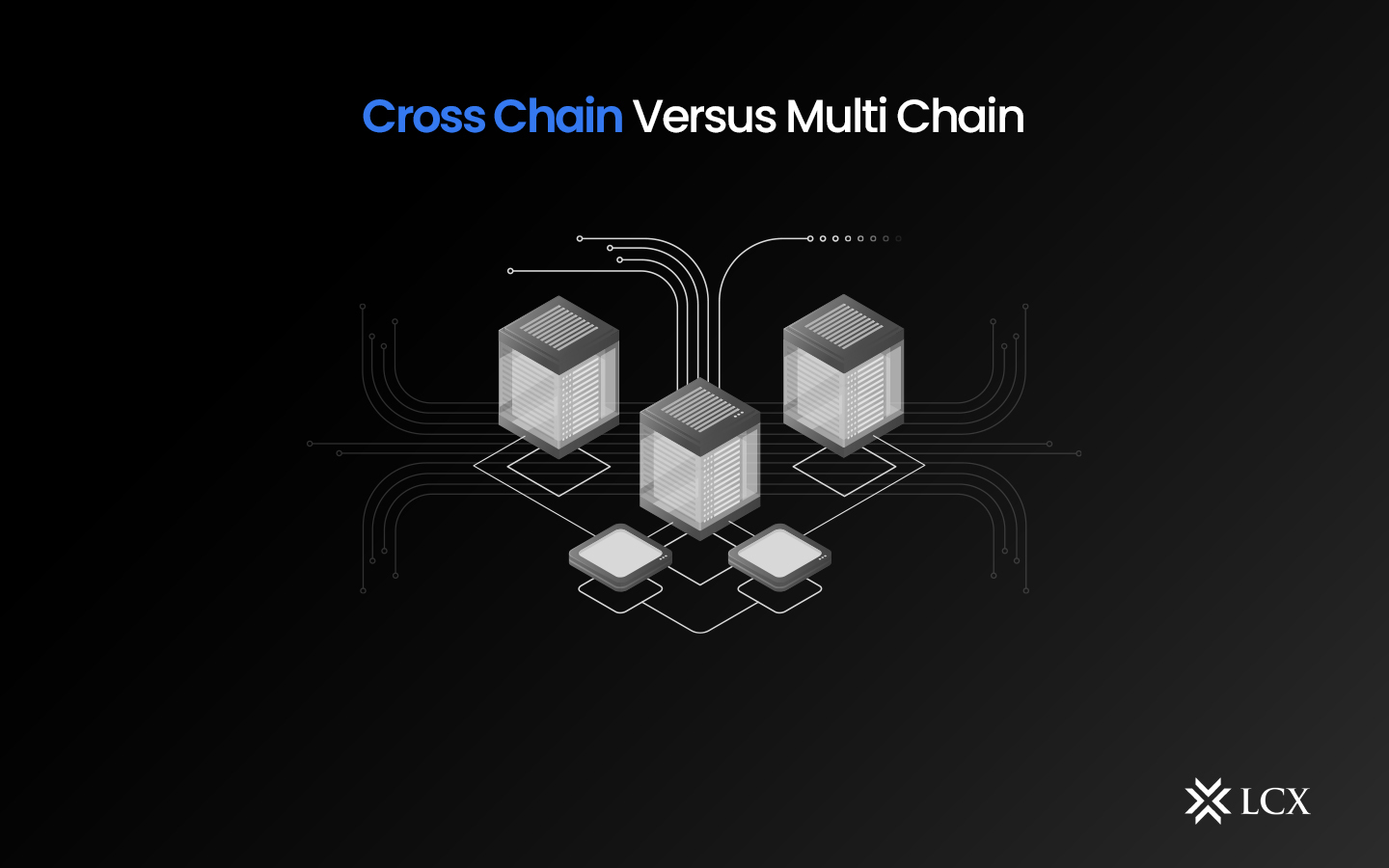The Web3 application layer exists on hundreds of distinct blockchains, layer-2 networks, and appchains as a result of the continuously increasing demand for blockspace. This fact has given rise to two new terms: cross-chain and multi-chain. In this blog, we will define their meanings and outline their distinctions.
A Brief History of the Multi-Chain Ecosystem
Ethereum was the first smart contract blockchain to support completely programmable decentralized applications, and its increasing network effects accelerated its adoption. The initial adoption of smart contracts occurred on Ethereum, and decentralized applications (dApps) such as Compound, MakerDAO, Uniswap, and EtherDelta emerged as a new method to access financial services entirely through on-chain infrastructure.
Nonetheless, the increasing demand for Ethereum smart contracts has increased demand for the network’s blockspace, increasing network transaction fees. While the Ethereum mainnet remains one of the most secure smart contract networks, many users have begun to seek out cheaper alternatives, and some developers have seen an opportunity to develop alternative smart contract platforms and steal some of Ethereum’s market share. This dynamic has contributed to the emergence of the multichain ecosystem.
What Is Multi-Chain?
Multi-chain is a form of blockchain technology in which multiple chains are interconnected in a federated setting. Federated chains enable permissioned access between specific entities while preserving the autonomy of each network individually. This also means that in order for participants on one chain to transact with participants on other chained networks, they must first agree upon a set of norms. It also allows organizations or individuals to securely maintain their own private data stores, as each network could independently operate its own consensus algorithm.
In a multi-chain environment, each instance of a decentralized application (dApp) comprises a set of smart contracts that are isolated from other applications on other blockchains. Through the evolution of the multi-chain ecosystem, the availability of new on-chain environments has increased the total aggregate throughput of the smart contract economy, resulting in the enrollment of more users who can transact at a lower cost. In addition, each network takes a unique approach to scalability, decentralization, mechanism design, consensus, execution, data availability, and privacy, among other factors. All of these approaches can be implemented and battle-tested simultaneously in the multi-chain ecosystem to advance Web3 development.
What Is Cross-Chain?
Cross-chain is a form of blockchain technology in which multiple chains are interconnected in an interoperable environment, enabling the exchange of assets and data across multiple networks. This permits the development of decentralized applications (Dapps), smart contracts, and secure transactions across multiple chains without the need for a centralized intermediary or controlling entity.
Cross-chain functionality enables developers to build natively cross-chain applications, where a single instance of a decentralized application (dApp) can function across multiple smart contracts deployed across multiple blockchains, as opposed to deploying multiple individual instances across distinct networks.
In a cross-chain context, different smart contracts on different chains execute distinct duties while remaining synchronized and supporting a single use case within a unified application. This allows developers to take advantage of the unique benefits of various networks.
Differences Between Cross Chain and Multi Chain
While cross-chain and multi-chain are often used interchangeably, they actually refer to different concepts. Cross-chain refers to the ability to transfer assets between different blockchain networks, while multi-chain refers to the use of multiple blockchains within a single ecosystem.
The primary difference between these two concepts is their focus. Cross-chain technology is primarily concerned with interoperability, and enabling communication between different blockchains. Multi-chain technology, on the other hand, is primarily concerned with scalability and flexibility, enabling multiple blockchains within a single ecosystem.
Another key difference between cross-chain and multi-chain is their use cases. Cross-chain technology is well-suited for use cases that require the transfer of assets between different blockchains, such as decentralized exchanges or cross-chain lending platforms. Multi-chain technology, on the other hand, is well-suited for use cases that require the use of multiple blockchains within a single ecosystem, such as gaming platforms or supply chain management systems.
Use Cases for Cross-Chain and Multi-Chain
Cross-chains are ideal for DApps that require high scalability, low latency, and cost-effectiveness due to their open and interoperable nature, whereas multi-chains provide superior security options for protecting sensitive data or information in a closed environment. Due to their distinct advantages over conventional solutions, there has been an increase in use cases for both technologies in recent years, spanning from finance to healthcare to gaming.
Cross Chain Scalability versus Multi-Chain
Cross-chain increases scalability by enabling multiple ledgers to communicate and interact with one another in order to process more transactions. Multi-chain, on the other hand, is limited by the number of nodes participating in the network, as only certain entities are permitted access. Nonetheless, multi-chains offer enhanced security because the data stored within them can be kept confidential and secure.
Cross-Chain vs. Multi-Chain Security
Cross-chain and multi-chain security are contingent upon the underlying consensus mechanism. Cross-chains utilize a distributed system in which data is cryptographically stored across multiple ledgers, so an assault on a single node does not compromise the entire network. Multi-chains are typically permissioned, so only certain nodes have access to the network, making it difficult for outsiders to obtain access or alter data stored within them.
Cross-Chain Versus Multi-Chain Cost-Efficiency
Cross-chain transactions typically require more computing power and energy than single-chain transactions, rendering them less cost-effective over time. Multi-chain networks are also costly to maintain due to the fact that each network requires its own hardware resources. Cross-chain solutions can provide enhanced scalability and interoperability, making them a beneficial investment for some organizations.
Cross-Chain vs. Multiple-Chain Performance & Speed
As data can be swiftly transferred between numerous ledgers, cross-chain networks typically offer quicker transaction times. Multi-chain networks, on the other hand, may be slower due to their permissioned nature and the requirement that all participating nodes attain consensus. Cross-chain and multi-chain each have their own distinct advantages and disadvantages, depending on the application. Cross-chain solutions should be considered by organizations seeking improved scalability, cost-effectiveness, and performance, whereas multi-chain networks may be advantageous to those seeking enhanced security. Before choosing the most appropriate technology for your project’s requirements, it is essential to evaluate its scope.
Interoperability in a Cross-Chain Environment as Opposed to a Multi-Chain Environment
Cross-chain technology provides increased interoperability between blockchains, enabling the transfer of data and assets between networks. This means that users can access a variety of services from various chains without relying on a singular blockchain or set of protocols. As they are governed by a specific set of rules and protocols, multi-chain networks are typically less flexible.
Conclusion
In conclusion, cross-chain and multi-chain are two important concepts in the world of cryptocurrency and blockchain technology. While these terms are often used interchangeably, they actually refer to different concepts. Cross-chain technology enables the transfer of assets between different blockchain networks, while multi-chain technology enables the use of multiple blockchains within a single ecosystem.
Both cross-chain and multi-chain technology are helping to shape the future of blockchain technology, enabling new use cases and applications that were previously impossible. As the world of cryptocurrency continues to evolve, it will be interesting to see how these technologies continue to develop and evolve.










